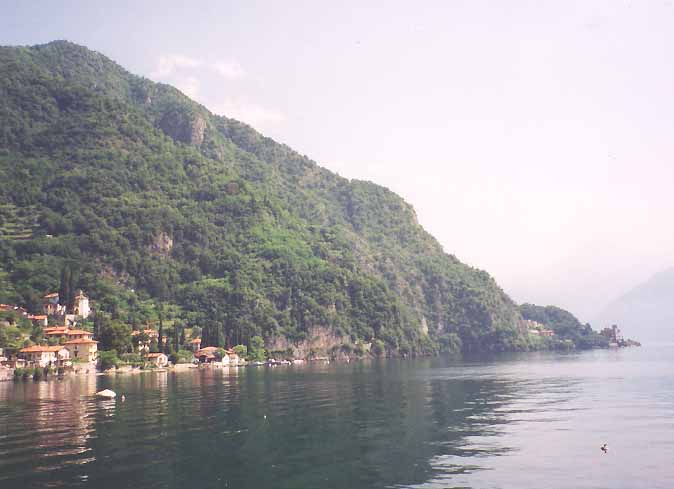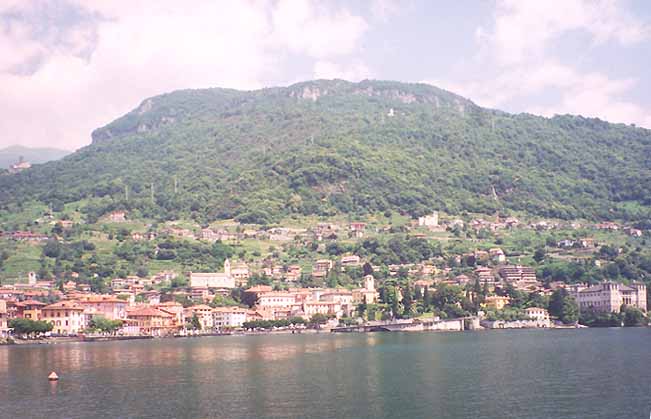time: contrast of temporal and atemporal, apprehending
in a moment ("the eye that greets") what is outside time or
beyond its reach ("unwearied"; "never-ending"); time
appears indeterminate, daylight; but then turns unexpectedly to evening
(132)
|
place: the western shore of Lake Como, probably the
upper section beyond Menággio; main emphasis is on contrast and
variety of scene, the insistence on this making for some awkward syntax:
"thy cliffs that scales"; "from the water tow'r / Insinuated"
(much improved in 1836); but opening lines correspond to the two types
of view announced in line 121, open and secluded |
perspective: position of observer seems indeterminate,
sometimes above the waterside, sometimes beside it; no organizing perspective,
rather a series of vignettes of different types of location; use of deictic
terms*; the contrast of lake and forested shore
implies a coherent landscape |
| movement: the narrator's movements are
unrecorded: W. was following the lakeside path, but no reference to walking
occurs in this passage; tropes of movement enliven the scene, e.g., "sweep";
"scales"; "tow'r"; and actual movement animates other
scenes: "sprinkling"; "droop"; "shooting";
but otherwise the descriptions seem static |
Wordsworth, from "Descriptive Sketches" (1793)
How bless'd, delicious Scene! the eye that greets
Thy open beauties, or thy lone retreats;
Th' unwearied sweep of wood thy cliffs that scales,
The never-ending waters of thy vales;
The cots, those dim religious groves embow'r,
Or, under rocks that from the water tow'r
Insinuated, sprinkling all the shore,
Each with his household boat beside the door,
Whose flaccid sails in forms fantastic droop,
Bright'ning the gloom where thick the forests stoop;
-- Thy torrents shooting from the clear-blue sky,
Thy towns, like swallows' nests that cleave on high;
That glimmer hoar in eve's last light, descry'd
Dim from the twilight water's shaggy side
(120-133)
|
distance: everything appears viewed
from the middle-distance, making for apparently generic descriptions ("Th'
unwearied sweep of wood"; "sprinkling all the shore"),
with perhaps greater distance comprised by the collective nouns of the
last four lines: "Thy torrents"; "Thy towns"; the
towns seem especially distant |
| feeling: two direct references to narrator's feelings
occur: "delicious" and "fantastic"; W. suggests here
he is experiencing that "deliquium of the soul, an enthusiastic
sensation of pleasure" described by Gilpin ("Essay") as
the highest emotion of the picturesque |
memory: being written during 1792, two years after
W.'s walking tour, how far the descriptions revert to the poet's more
familiar scenery of the Lake District or mark the difference (e.g., "fantastic";
and "towns . . . on high" contrast with the English scene);
W. will appear to remember much more specific detail later when returning
to this experience in The Prelude of 1805 |
intertextuality: seclusion of cots, cf. Hutchinson
on the Lakes*; recurs in "Tintern";
romanticism of evening scene suggests the influence of the same writers
(e.g., Young) that influenced Radcliffe's evening settings and terms ("glimmer,"
"dim"); that the poem is in the picturesque mode is denied by
W. in his note to line 347 |

